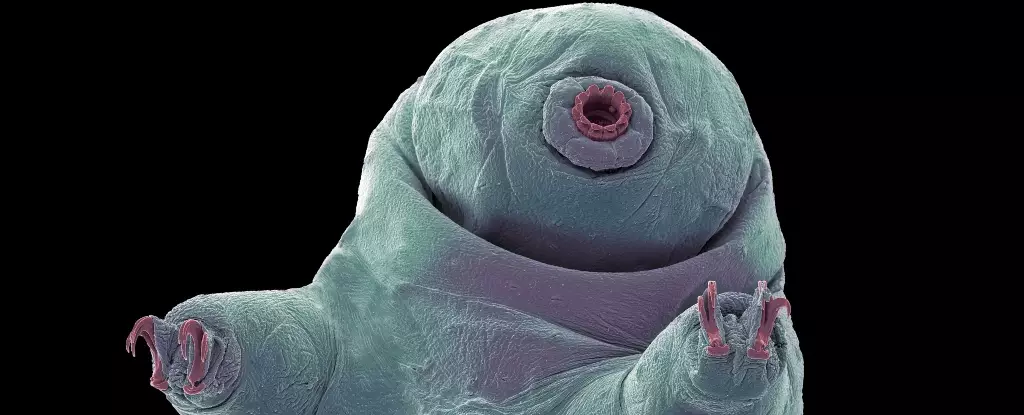The recent Lunar and Planetary Science Conference, held in The Woodlands, Texas from March 10-14, 2025, has opened a gateway to exciting possibilities for space exploration. As scientists from around the globe converged to present bold mission concepts and innovative research ideas, one theme steadily emerged: the pressing question of human survival in extraterrestrial environments. Among the most compelling presentations at the conference were those focusing on tardigrades—remarkable organisms that offer unparalleled insights into resilience under duress.
Understanding Tardigrades: Nature’s Extremophiles
Tardigrades, sometimes affectionately referred to as “water bears,” have captured the scientific community’s imagination due to their extraordinary capacity to endure extreme conditions. These minuscule creatures can withstand temperatures ranging from a frigid -271°C to a scorching 150°C, as well as exposure to over 1,200 times atmospheric pressure. Their ability to survive desiccation and intense ionizing radiation elevates them to the status of model organisms for astrobiological research. Isadora Arantes, an ambitious NASA ambassador and astronaut candidate, and Geancarlo Zanatta, an esteemed Associate Professor at the Federal University of Rio Grande do Sul, have meticulously studied these remarkable organisms to unseal the secrets behind their tenacity.
Unraveling the Molecular Magic of Resilience
Among the key discoveries presented by Arantes and Prof. Zanatta was the role of a specific protein known as Dsup (Damage Suppressor), a critical shield for genetic material when faced with the onslaught of radiation. The researchers utilized the Gromacs software to conduct simulations that elucidate how Dsup can effectively reduce DNA damage. By creating a protective barrier around genetic material, this protein plays a significant role in preserving genomic integrity. Their research not only deepens our understanding of tardigrades but hints at the potential application of these findings in future manned space missions.
Moreover, the duo delved into the significance of heat shock proteins (HSPs) and antioxidant enzymes, which together offer a further layer of protection against thermal stress and oxidative damage. These proteins maintain cellular stability, ensuring survival even under the most unfriendly conditions. In this context, the study authors draw a parallel between tardigrades and hypothetical life forms that may thrive in extreme extraterrestrial environments, such as Mars or the icy moons of Europa and Titan, indicating how the study of these extremophiles might provide clues for life beyond our planet.
Tardigrades and the Quest for Extraterrestrial Life
The implications of this research extend beyond Earthly applications, pointing toward a broader understanding of life’s adaptability. By studying how tardigrades cope with extreme adversity, we may glean insights into life in hostile environments throughout the cosmos—offering potential pathways for human survival on other planets. For instance, Mars’ challenging radiation-filled landscape and the varied climates of moons like Europa and Titan serve as focal points for understanding astrobiological resilience.
The stability of tardigrade proteins, as suggested by related studies, may indicate that life can persist in liquid ammonia or other unusual environments. This opens up promising avenues for space missions aimed at understanding the existence of life on planets previously thought to be barren. In short, tardigrades could redefine our search for life beyond Earth by acting as maternal models for potential extraterrestrial species.
Bridging Space Science and Biotechnology
As Arantes and Prof. Zanatta pointed out, research on tardigrades could yield practical applications in biotechnology that might one day enhance human resilience. For instance, harnessing the power of these organisms could lead to breakthroughs in increasing radiation resistance, developing frost-resistant human cells, or engineering crops capable of thriving in extreme climates. Such advancements speak to the dual relevance of extremophiles—both in addressing terrestrial challenges and preparing humanity for life in space.
Their assertion that further interdisciplinary research—combining computational and experimental methods—is essential to understanding extremophile mechanisms of survival could not be more timely. With increasing funding and interest in space research, a profound exploration into such paradigms promises to illuminate the future pathways of human expansion beyond our home planet.
In essence, the ongoing exploration of tardigrades serves as a poignant reminder of life’s remarkable capacity to adapt. As we venture into the far reaches of space, taking cues from these resilient organisms will be key in ensuring humanity’s survival among the stars.


Leave a Reply